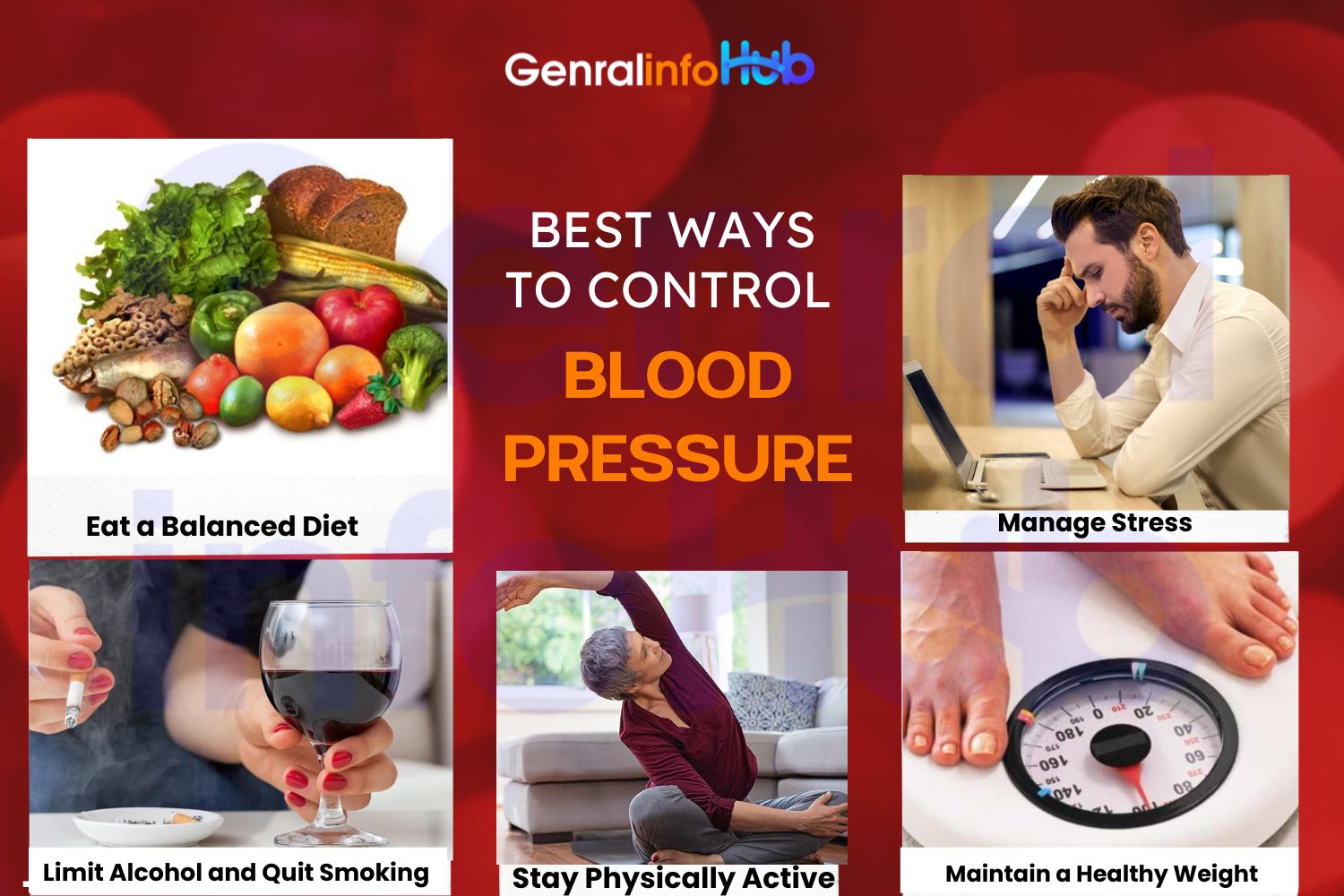Maintaining healthy blood pressure levels is crucial for overall well-being, as it helps reduce the risk of heart disease, stroke, and other complications. Blood pressure refers to the force exerted by circulating blood on the walls of the arteries. High blood pressure, also known as hypertension, can damage the heart and blood vessels over time. On the other hand, low blood pressure (hypotension) can cause dizziness and fainting. Understanding blood pressure by age and maintaining normal blood pressure levels is essential to avoid these health issues. Here are some effective strategies to manage and control blood pressure.
Understand Your Blood Pressure Levels
It’s important to know what constitutes normal blood pressure levels. Blood pressure is measured in millimeters of mercury (mmHg) and is given as two numbers, for example, 120/80 mmHg. The first number (systolic pressure) measures the force when your heart beats, while the second number (diastolic pressure) measures the pressure between beats. According to experts, a normal blood pressure level is usually less than 120/80 mmHg.
Blood pressure by age varies, but the goal is to keep it within a healthy range. Here’s a general guide:
In adults under 40: Blood pressure should ideally be between 90/60 mmHg and 120/80 mmHg.
In adults aged 40-60: Normal blood pressure ranges between 110/70 mmHg and 130/85 mmHg.
In seniors over 60: Blood pressure levels should be below 140/90 mmHg.
Eat a Balanced, Low-Sodium Diet
One of the most effective ways to control blood pressure is by eating a heart-healthy diet rich in fruits, vegetables, whole grains, lean proteins, and healthy fats. The DASH (Dietary Approaches to Stop Hypertension) diet is often recommended to lower blood pressure levels. It emphasizes foods that are rich in potassium, calcium, and magnesium, which help control blood pressure.
Equally important is reducing sodium (salt) intake. Consuming too much salt can raise blood pressure. The American Heart Association recommends no more than 2,300 mg of sodium per day, with an ideal limit of 1,500 mg for most adults, especially those with high blood pressure.
Stay Physically Active
Regular exercise is another essential component of blood pressure management. Engaging in at least 150 minutes of moderate-intensity aerobic activity per week can significantly lower blood pressure. Activities such as brisk walking, cycling, swimming, or even gardening can help keep blood pressure in check.
For those with low blood pressure, physical activity can improve circulation, boosting overall energy levels. However, it’s important to avoid sudden changes in position (such as standing up too quickly), as this can cause dizziness in people with low blood pressure.
Maintain a Healthy Weight
Weight management plays a critical role in controlling blood pressure. Being overweight or obese increases the risk of developing high blood pressure, while losing even a small amount of weight can help lower blood pressure levels. By maintaining a healthy body mass index (BMI), the heart doesn’t have to work as hard to pump blood, which can lower systolic and diastolic pressure.
In contrast, individuals with low blood pressure may need to focus on maintaining a healthy weight to prevent further drops in blood pressure levels.
Manage Stress
Chronic stress is a significant contributor to high blood pressure. When stressed, the body releases hormones that temporarily increase blood pressure by causing the heart to beat faster and the blood vessels to narrow. Reducing stress through mindfulness, meditation, deep breathing, or engaging in hobbies can help keep blood pressure levels in the normal range.
For people with low blood pressure, managing stress is also essential. Excessive stress can exacerbate symptoms such as dizziness and fatigue.
Limit Alcohol and Quit Smoking
Limiting alcohol intake and quitting smoking are critical lifestyle changes to control blood pressure. Drinking too much alcohol can raise blood pressure, and it is recommended that men consume no more than two drinks per day, while women should limit themselves to one drink per day.
Smoking also raises blood pressure by damaging blood vessels and increasing the risk of heart disease. Quitting smoking not only helps in lowering blood pressure but also improves overall heart health.
Regular Monitoring and Medication
It is essential to monitor blood pressure regularly, especially for those who are at risk of hypertension or hypotension. Keeping track of blood pressure by age helps ensure that you remain within normal blood pressure levels. Regular check-ups with a healthcare professional will help detect any changes early, allowing for timely intervention.
For individuals with high blood pressure, medication prescribed by a doctor may be necessary to manage the condition. There are various classes of blood pressure-lowering medications, such as diuretics, beta-blockers, and ACE inhibitors, that can help achieve a healthy blood pressure level.







Leave a Reply